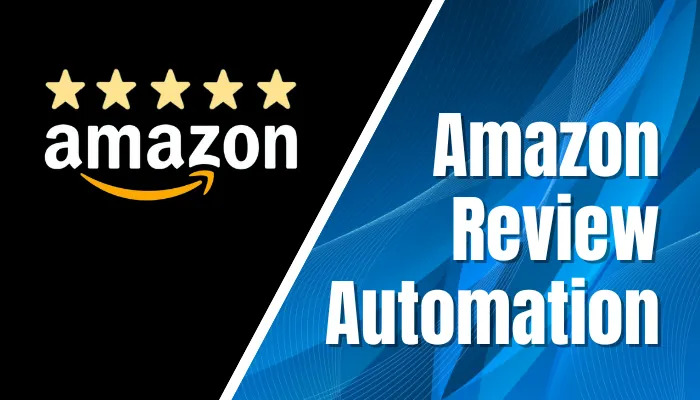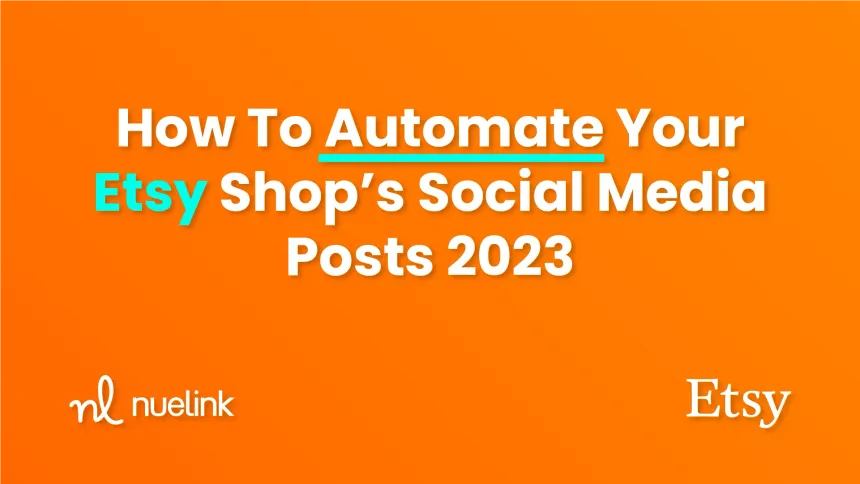Running a Shopify store can be overwhelming. You’re juggling inventory, fulfilling orders, handling customer queries, and growing your business all at once. That’s where automation comes in handy. It takes care of the repetitive stuff, so you can focus on the important things. Here are 10 practical automation hacks to make running your store a lot easier:
1. Automate Inventory Updates
Manually updating inventory is a time-consuming task that often leads to errors. Use apps like Stock Sync or Shopify Flow (for Shopify Plus users) to keep inventory levels accurate across all sales channels. With automation, you can also integrate your inventory system with suppliers, ensuring seamless updates on stock availability. For instance, when a product is sold, your inventory adjusts automatically across platforms, reducing the risk of overselling. You can even set up alerts when stock is running low, so you never disappoint customers with an “out of stock” message.
2. Streamline Order Fulfillment
Order fulfillment can eat up your entire day if you let it. Integrate your Shopify store with tools like ShipStation or Oberlo to automate shipping labels, tracking updates, and even dropshipping. For example, these tools can automatically generate shipping labels as soon as an order is placed, and tracking information can be sent directly to customers without any manual input. Enable automatic notifications so customers stay updated at every step of their order. By automating fulfillment, you also minimize human error, ensuring orders are accurate and delivered on time.
3. Set Up Automated Email Campaigns
Email marketing is powerful, but sending individual emails is a huge time-suck. Use apps like Klaviyo or Omnisend to automate email sequences. From welcome emails to abandoned cart reminders and post-purchase follow-ups, these tools keep your customers engaged without any manual effort. For example, if a customer leaves items in their cart, an abandoned cart email can be triggered within a few hours, complete with product images and a discount code to encourage them to complete their purchase. Personalized email campaigns also improve customer retention by making your communication feel tailored and relevant.
4. Simplify Customer Support with Chatbots
Customers want quick answers. AI-powered chatbots like Tidio or Gorgias can handle common questions 24/7, such as order tracking or FAQs. This frees up your human team to handle more complex issues. Chatbots can also collect valuable customer data, which you can use to improve your store’s performance. For example, if many customers ask about shipping times, you can display this information more prominently on your website. A well-implemented chatbot ensures your customers feel heard and supported, even outside of business hours.
5. Automate Price Adjustments
Running a sale or flash discount? Don’t manually change prices. Use Bold Discounts to schedule and automate price changes. Add countdown timers to build urgency and boost conversions—nothing says “buy now” like a ticking clock. Additionally, you can create dynamic pricing rules based on customer behavior, such as offering a discount to first-time buyers or bundling discounts for frequently bought together products. Automating these adjustments not only saves time but also enhances the shopping experience for your customers.
6. Leverage Smart Product Recommendations
Boost your average order value by automating product recommendations. Apps like ReConvert or Shopify’s built-in AI suggest related products based on customer behavior. It’s like having a digital salesperson ask, “Would you like fries with that?” For example, if a customer is buying a laptop, the system can recommend accessories like a mouse or a laptop bag. These upsells and cross-sells are proven strategies to increase revenue and improve customer satisfaction by offering relevant suggestions.
7. Automate Customer Reviews and Feedback Requests
Reviews are essential for building trust, but chasing customers for them is tedious. Apps like Loox or Stamped.io can automatically request reviews after purchase. Sweeten the deal with a small discount or freebie to encourage more feedback. These apps can also send follow-up reminders if a customer hasn’t responded. Positive reviews build social proof, which is invaluable for converting new visitors into buyers. You can also showcase these reviews on product pages or social media to highlight customer satisfaction.
8. Streamline Returns and Exchanges
Returns happen, but managing them doesn’t have to be a nightmare. Use apps like Returnly or Loop Returns to automate the process. Customers can initiate returns, print labels, and even exchange items without needing your direct input. Automating returns not only saves time but also enhances the customer experience. For instance, these tools can provide instant refunds or store credits, encouraging customers to shop with you again. A hassle-free return policy can turn a potential loss into an opportunity to build customer loyalty.
9. Automate Social Media Posting
Maintaining a consistent social media presence is crucial but time-consuming. Schedule posts in advance using tools like Hootsuite, Buffer, or Later. Spend an hour scheduling a week’s worth of content and use the rest of your time to engage with followers. These platforms also offer analytics to track the performance of your posts, helping you refine your strategy. Consistency in posting keeps your audience engaged and ensures your brand remains top-of-mind.
10. Enable Automatic Tax Calculations
Tax compliance is complicated. Shopify’s built-in tax settings can automatically calculate taxes based on your location and that of your customers. For more complex scenarios, use apps like Avalara to handle multi-state or international taxes. Automating taxes ensures accuracy and reduces the risk of compliance issues, which can save you from hefty penalties. It also simplifies the checkout process for customers, providing them with clear, upfront costs.
Bonus Tip: Use Shopify Flow for Custom Workflows
If you’re on Shopify Plus, Shopify Flow lets you create custom workflows to automate just about anything. From tagging VIP customers to sending restock alerts, it’s like having a personal assistant built into your store. For example, you can set up workflows to automatically apply discounts to loyal customers or notify your team when high-value orders come in. These tailored automations allow you to run your business more efficiently and provide a personalized experience for your customers.
Final Thoughts
Automation is a game-changer for e-commerce businesses. Start by implementing a few of these hacks and see how much time you reclaim. With less time spent on repetitive tasks, you can focus on what really matters: growing your brand. Whether it’s automating inventory updates, customer support, or email campaigns, these tools can significantly streamline your operations.
Remember, the key to successful automation is starting small. Choose one or two areas where you spend the most time and implement automation tools to handle them. As you get more comfortable, you can add more automations to your workflow. Before you know it, your Shopify store will be running like a well-oiled machine.
Time saved is money earned—so start automating today!
—————————————————————————————————————————
Mastering Shopify Automation: Streamline Operations, Drive Sales, and Fuel Growth
In today’s fast-paced eCommerce landscape, staying competitive requires efficiency, scalability, and a focus on delivering exceptional customer experiences. Enter Shopify automation – a game-changer for businesses looking to optimize their workflows, boost sales, and scale without burnout. Whether you’re a seasoned entrepreneur or a new store owner, automation can transform the way you run your Shopify store. This ultimate guide explores the ins and outs of Shopify automation, helping you save time, drive sales, and fuel your business’s growth.
What is Shopify Automation?
Shopify automation involves leveraging tools, apps, and workflows to handle repetitive tasks, freeing up your time for strategic decisions. Automation enhances efficiency by managing inventory updates, email marketing, order processing, and more without manual intervention. With Shopify’s built-in tools like Flow and a variety of third-party apps, you can design automated processes tailored to your store’s needs.
Why Automate Your Shopify Store?
Automation isn’t just a convenience; it’s a necessity for scaling your business. Here’s a closer look at the core benefits:
Save Time for What Matters Most
Time is a precious resource for any entrepreneur. Automating repetitive tasks such as updating inventory, processing orders, and sending routine emails allows you to redirect your energy toward strategic growth initiatives. For example, instead of manually managing stock levels, you can focus on product development, exploring new markets, or enhancing customer experience.
Boost Accuracy and Reduce Human Error
Manual tasks are prone to mistakes, which can result in customer dissatisfaction or operational inefficiencies. Automation minimizes errors in critical areas like pricing updates, data entry, and shipping calculations. By ensuring accuracy, you create a smoother customer journey, build trust, and reduce costly mishaps.
Increase Sales Through Personalization
Today’s customers expect personalized experiences. Automation enables you to deliver targeted marketing campaigns based on customer behavior, preferences, and purchase history. Tools like Klaviyo can send tailored product recommendations, cart abandonment emails, and special offers, significantly boosting conversion rates and encouraging repeat purchases.
Enhance Scalability Without Overwhelming Your Team
As your business grows, managing increased orders, customers, and processes manually can become overwhelming. Automation ensures your operations remain seamless and efficient, no matter the scale. Whether it’s handling high-volume sales events or managing diverse customer segments, automation keeps your store running smoothly without the need for a proportional increase in staff.
Strengthen Customer Relationships
Timely and relevant communication is crucial for building lasting customer relationships. Automated systems can handle follow-up emails, loyalty rewards, and satisfaction surveys, showing customers that you care about their experience. This consistent engagement fosters loyalty and boosts lifetime value.
Key Automation Opportunities
Inventory Management
Automate stock updates to avoid overselling or running out of stock. Integrate tools that alert you when inventory is low and replenish it automatically through supplier connections.
Order Processing
Streamline workflows like tagging and routing orders based on location, value, or type. Automation ensures customers receive order confirmations and shipping notifications promptly, creating a seamless experience.
Customer Engagement
Engage customers through automated email campaigns and follow-ups. Tools like Klaviyo enable tailored recommendations, review requests, and post-purchase thank-you emails to enhance loyalty.
Marketing Campaigns
Schedule social media posts and promotions automatically. Launch campaigns triggered by customer behavior, such as sending a discount code to those who abandon their carts.
Common Challenges and Solutions
Learning Curve
Getting started with Shopify automation can feel overwhelming, especially if you’re unfamiliar with the tools and workflows involved. Start by focusing on automating one area of your business, such as inventory management or email marketing. Invest in tutorials, guides, or professional services to ease the learning process. Many automation platforms offer support and resources to help you set up workflows efficiently.
Integration Issues
Not all tools work seamlessly together, and integration challenges can disrupt your operations. Before implementing any new automation tool, verify its compatibility with your existing systems. Opt for tools with robust integration capabilities or use middleware solutions like Zapier to bridge gaps between apps. Testing workflows in a controlled environment can also help identify and resolve potential issues before they impact your live store.
Over-Automation
While automation is powerful, over-relying on it can lead to a loss of the human touch, particularly in customer interactions. Balance is key. For example, automated emails can handle order confirmations and updates, but personalized responses from customer service representatives can make a significant difference in building loyalty. Periodically review your automated workflows to ensure they align with your brand’s voice and values.
Cost Management
Some automation tools come with a steep price tag, especially for advanced features. To avoid overspending, prioritize tools that address your immediate needs and offer scalability as your business grows. Evaluate the return on investment (ROI) of each tool by analyzing the time saved, error reduction, and revenue generated through automation.
Keeping Up with Updates
Automation platforms frequently update their features to improve functionality. Staying on top of these changes can be challenging but essential for maintaining efficiency. Dedicate time to reviewing release notes, attending webinars, or consulting with platform support teams to understand how updates can benefit your workflows. Being proactive ensures you’re making the most of your automation tools.
Shopify automation is a powerful tool for businesses aiming to thrive in a competitive eCommerce environment. By automating repetitive tasks and improving efficiency, you free up time to focus on strategic growth. Start small, refine your workflows, and embrace the benefits of automation to take your Shopify store to the next level.







